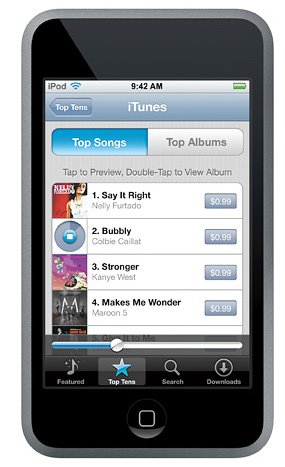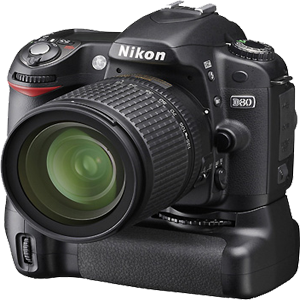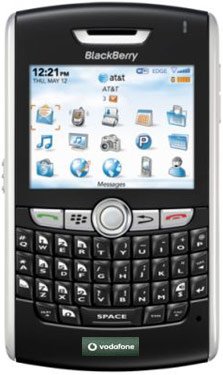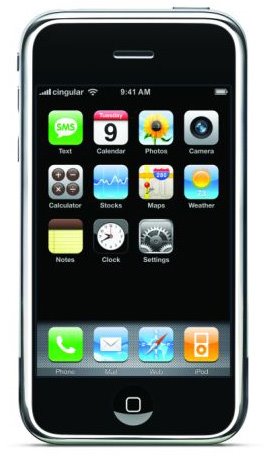How does the Samsung Galaxy S matches up against the Nexus S, the successor of the Nexus One? If you are looking for a new smartphone, should you buy the new Android 2.3-powered Nexus S now or just go for the Samsung Galaxy S and wait for the Android 2.3 update?
In this review, we will provide our opinions on this showdown, as well as our perspective on the Nexus S in general.
Samsung has been a dominant force lately in the highly competitive smartphone domain.
Releasing the Samsung Galaxy S in Europe and Asia and different variations of the Samsung Galaxy S in the United States, Samsung is truly the clear winner in the fast-expanding Android market. The latest Comscore Nov 2010 report found Samsung to be the top handset manufacturer overall with 24.5% market share
With the decision to launch Nexus S with Samsung, Google has indirectly acknowledged the growing influence of Samsung and their Android products. However, the initial reviews of the Nexus S are not flattering, to say the least. A lot of people have been commenting that the Nexus S is basically a Samsung Galaxy S with contour screen, slightly different looks and running on Android 2.3, which is its main draw. Is that the truth?
Dimensions and Design
Galaxy S - 122 x 64 x 9.9mm (118g)
Nexus S – 123.9 x 63 x 10.9mm (129g)
Although Samsung manufactured and designed both the devices in question they aren’t actually as similar looking as you’d first expect them to be. The dimensions of both phones are similar but the Nexus S has obviously taken a step back from the iPhone-like design of the Galaxy S.
Instead, the Nexus S has taken on a decidedly softer profile with its rounded sides and curved body.
Normal users should not be able to distinguish the differences in their weight and as such, it boils down to personal preference on the winner of this section.
Storage
Galaxy S – 8 or 16GB, able to support up to 32GB microSD
Nexus S – 16GB, no microSD support
It definitely comes as a surprise to many people when it was discovered that the Nexus S will be released without microSD support. The Galaxy S, on the other hand, comes with either 8 or 16Gb and also has expandable storage, up to 32GB, which is a potential 48GB of storage in total.
Although it can be argued that a lot of apps on the Android Market currently cannot be saved to SD cards yet, it should not be a valid reason for the lack of microSD support. If Google has intended for all applications to be saved only to internal memory, there would not have been support for such functionality in Froyo. We found this inconsistency to be slightly frustrating and as such, the Galaxy S is definitely the winner here.
Displays and Processors
Galaxy S – Super AMOLED, 4 inch
Nexus S – Super AMOLED, 4 inch
On the display side, there is nothing to separate the two unless you take into consideration the contour screen of the Nexus S, which in our opinion, did not really affect the performance of the display much.
Galaxy S – 1GHz Cortex A8 (Hummingbird) processor
Nexus S – 1GHz Cortex A8 (Hummingbird) processor
On the processor side, there is no difference between the 2 models as well. In reality, the current 1Ghz processors are adequate for the foreseeable usage of these 2 smartphones and thus, this might explain why the Nexus S is only running the standard 1Ghz Hummingbird processor found in many high end Android phones. However, from CES 2011, we have seen what the Motorola Atrix 4G is capable of with its dual core processors. It would not be surprising thus to see many more future smartphones being released with dual core processors.
Camera
Galaxy S – 5 MP front facing camera
Nexus S – 5MP front facing camera with flash
If there is one thing that Samsung and Google has got it right, it must be the inclusion of a flash in the Nexus S for its camera. For far too long, iPhone users have been gushing about the flash that comes with the iPhone 4 and how it has been an improvement over the iPhone 3GS camera functionality. Now, at last, Samsung and Google can point to Nexus S as their answer to the weakness of the Galaxy S.
Operating System
Galaxy S – Android 2.3
Nexus S – Android 2.2 (soon to be updated to 2.3?)
The unique selling points of the Nexus S have always been that:
- It’s the first Android 2.3 device
- The Nexus S is guaranteed to have access to the next version of Android as soon as it is released
The Nexus S is also a fully open phone for developers, and thus, it is guaranteed that a lot of useful mods and ROMs will be developed for it, just like the case with the Nexus One. The Galaxy S, on the other hand, does not allow too much accessibility to its users. This makes it harder for those who like to tinker around or have full control over their phones. Well, you can always choose to root your Galaxy S but that’s another story altogether.
As such, besides the additional functionalities provided by Android 2.3, Nexus S should be a more appealing choice for the tinkers and developers out there. Coupled this with the fact that Samsung might not provide the upgrade to Android 2.3 for the Galaxy S as soon as we like it to be, the Nexus S is definitely the winner for this section.
Summary
From the results of the matchup, it becomes apparent that the intention of Nexus S is never to compete with or push the limits on the technical specifications and performance benchmark of current smartphones. The Nexus S is comparable to the Samsung Galaxy S for the normal everyday users but if it is taken in the context of a developer phone, then the advantages of the Nexus S becomes clear.
If you are an early adopter, an Android app developer or someone that desires full control of your phone, the Nexus S will be the logical choice. If you are comfortable with the default Samsung TouchWiz interface and has no intentions of even rooting your phone, then the Samsung Galaxy S will be a much better choice for you in terms of stability and support.




